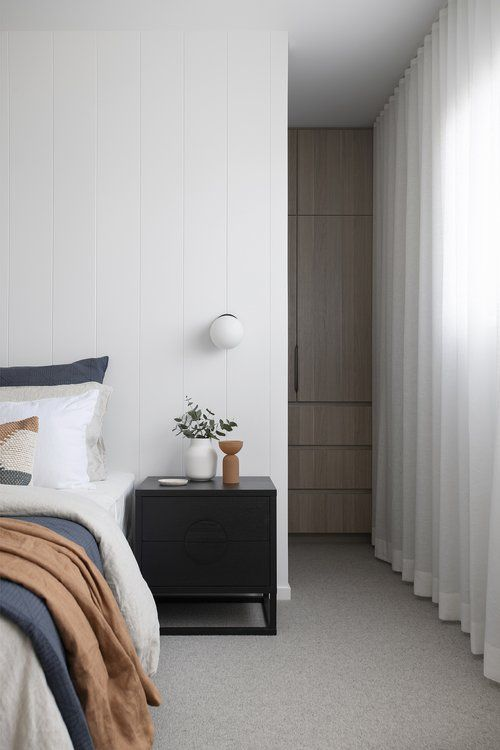Designing for a good night’s sleep
Ah sleep....sometimes so elusive, but so needed to be functioning humans!
So what does interior design have to do with sleep? Well I'm glad you asked! There's a range of measures that can be implemented from a design perspective to increase quality sleep and give you optimal conditions for waking up feeling fresh.
Tom Mark Henry
My first step is all about REMOVAL of certain items from the bedroom, which includes:
Clutter! I see so many homes and it's no surprise that many of us struggle to keep our houses neat and tidy. But this can be a critical step in creating a calm environment - it's not just about aesthetics but the impact clutter can have on your brain. So, get those clothes off the floor or chair and into the wardrobe or laundry. Tidy up bedside tables and drawers and make sure anything you can see makes you happy not stressed
TV and tech - I'm not a fan of TVs in the bedroom and it's proven that using our devices late at night can mess with our body clocks. So when it's time to get some zzzs, keep the devices out of the bedroom
Workspace - with COVID and the rise of working from home, it's only natural that many spaces in the home are doing double duty. If you can, remove any work related items from the bedroom - the last thing you want to see before going to bed is the laptop reminding you of an unfinished task or tomorrow's meeting schedule. If your home doesn't allow for a dedicated work space, then my advice is to establish an end of day routine that sees you tidy up your workspace and leaving your laptop elsewhere in the house
Zephyr and Stone
Then what do we add in?
Lighting - as with all spaces we want a mix of lighting options. Task lighting might include downlights to provide bright light across the room, but most important will be either lamps or wall sconces to create softer, ambient light for evenings. Ideally these would be on dimmers to have full control over the light level, be a warm white to help you wind down and have no "flicker" to support a healthy circadian rhythm. If you need additional cooling or ventilation in the space, you might also like to consider a ceiling fan to create comfortable airflow.
Window treatments - similar to lighting, we want control over the external light source at different times of the day. My fave combos for a bedroom are either a roller blind covered with sheer curtains, or sheer curtains layered behind lined drapes. Both give options to allow natural daylight in, whilst also ensuring a dark space for optimal sleeping. The use of lined drapes can assist with the thermal properties of the room and along with sheer curtains, add beautiful tactility and softness to a bedroom
Bedding - here's it's all about layers! Chose natural fibres where possible like linen, to help regulate your body temperature, and layer up with blankets or throws for cooler evenings.
Colours - finally you might like to consider the colours you use. Ideally your bedroom should have a calming atmosphere, so it's a good idea to avoid overly bright colours or clashing patterns. Opt for neutrals, deep blues or greens for a peaceful environment
So when approaching bedroom interior design, my key takeaways are -
Keep it calm.
Strip out what’s not needed, with idea being that removal of clutter will help your brain to relax and head off to a peaceful sleep.
Make it beautiful.
Use the best quality items you can afford to give you a sense of luxury - beautiful bed linens, soothing colours and soft lighting.
Happy sleeping!
Wanting to give your own bedroom an uplift? See our interior design services.




